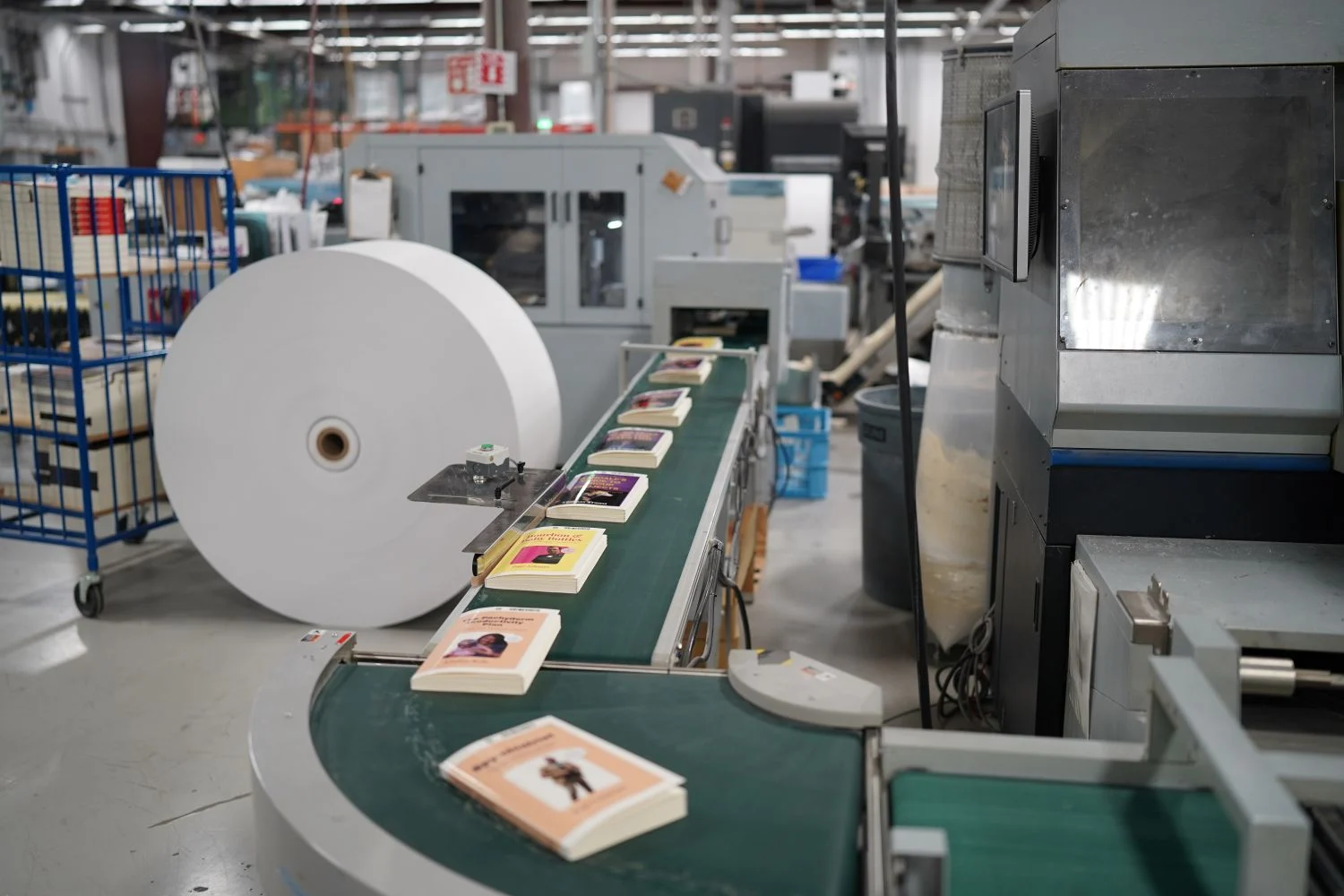Manufacturing floors and job sites are hostile to paper. Oil‑stained gloves flip pages, airborne grit abrades covers and manuals are tossed into toolboxes instead of bookshelves. If a catalog tears or a guide book’s spine cracks, information is lost and credibility goes with it. Building durability into the print specification up front keeps your product in circulation longer and reduces reprint costs.
At Walsworth we look at durability holistically; substrate, ink, coating and binding all have a role to play. The following choices will help your next catalog, magazine or book hold up under real‑world abuse while still reflecting your brand.
1. Paper Stocks That Shrug Off Wear
Choose basis weight for strength
For body pages, start at 60# for magazines and move to 70‑80 lb# for catalogs and guide books that will be thumbed daily. Heavier sheets resist dog‑ears and punctures, and paper thickness also determines the spine width. Carefully consider the binding type for functionality and the expected durability.
Coated vs uncoated
Gloss and matte coated stocks seal surface fibers so ink sits on top rather than soaking in. The result is sharper imagery and, more important for durability, a surface that may be wiped clean. Matte coatings diffuse glare under warehouse and shop lighting, yet still repel grime.
2. Cover Substrates That Defend the Content
C1S and C2S cover grades
A caliper of at least 9 pt provides stiffness so covers don’t curl after repeated flexing. Walsworth’s sheetfed lines run C1S (coated one side) for traditional perfect-bound books and C2S when inside-cover printing is needed. Lamination options are also available to enhance durability and protect against scuffs, scratches and moisture.
Heavyweight text wraps
When catalogs must mail at lighter weights we often wrap the book with 100# (150 gsm) text with either UV or film lamination. This balances postage, flexibility and lifespan.
Hardcovers and casewraps
Tool rooms prize books that lie flat and survive year after year. Smyth‑sewn hardcovers with laminated case wraps are the gold standard.
3. Binding Methods Built To Last
PUR perfect binding
Polyurethane Reactive (PUR) adhesive maintains flexibility from ‑40 °F to 200 °F and bonds well to coated papers. Walsworth’s perfect‑binding lines apply a thin PUR layer that actually exceeds page‑pull strength requirements for ASTM tests, making it ideal for thick catalogs.
Smyth sewn signatures
For premium guide books, specify Smyth sewing followed by case‑in or lay‑flat soft cover. Sewing allows the book to open 180° without stressing the spine and pages will not pull out even after thousands of uses.
Wire‑O, Plastic Coil and lay‑flat options
Bench technicians appreciate manuals that stay open to the selected page. Plastic Coil with a laminated cover is the most common selection. Wire‑O with concealed covers delivers that function while protecting the metal spine from catching on machinery.
4. Coatings That Protect and Perform
Aqueous and UV coatings
Press‑applied gloss or matte aqueous coats seal ink while speeding dry time. For maximum abrasion resistance, specify UV coating; its cross‑linked surface stands up to metal chips and solvent splashes common in machining areas.
Film lamination
Gloss, matte, scuff‑resistant matte and Soft Touch laminations all add barrier protection. Scuff‑free matte is the workhorse for industrial catalogs because it hides fingerprints yet resists scratching, and gloss lamination is equally effective at resisting damage. Our laminating films accommodate inline foil stamping or spot UV so durability never means sacrificing branding impact.
5. Practical Extras That Extend Lifespan
- Drill and bind‑in inserts: Pre‑drill reference books to fit standard shop binders so pages are supported by rings not the spine.
- Polybagging: Individually bag catalogs before warehousing to keep dust off until they reach the line.
- Variable data printing on covers: Add location‑specific covers so each plant can mark its books without adhesive labels that peel.
- Fulfillment kitting: We can shrink‑wrap manuals with torque wrench certificates or calibration stickers ensuring the set stays intact from dock to toolbox.
Bringing it All Together — Walsworth’s Integrated Workflow
Durability is not a single specification. It is the sum of press chemistry, substrate science and bindery craftsmanship. Because Walsworth controls every step — web and sheetfed presses, digital imaging, lamination and a full menu of mechanical and case binding — we can model how choices interact long before your job hits the pressroom.
Our pre-press team runs ink‑limit tests on your chosen stock then provides spine and hinge recommendations. In finishing, we test page‑pull and flex fatigue so you can quote a service life with confidence.
Ready To Spec Your Next Print Job?
Whether you need a 48‑page tool catalog that ships every quarter or a 500‑page maintenance bible that must survive a decade of tear‑down cycles, Walsworth has the materials, equipment and expertise to make it happen. Tell us about your environment and we will engineer the right combination of paper, cover, coating and binding.
Durability should never be an afterthought. Let’s make sure your print products work as hard as the people who rely on them. Start the conversation with a Walsworth print specialist today and get your information in the hands of your readers.
* This article was developed with assistance from OpenAI’s GPT-o3 Pro large language AI model.






